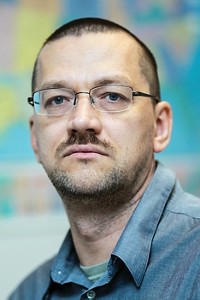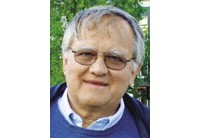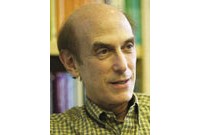Advertisement
Grab your lab coat. Let's get started
Welcome!
Welcome!
Create an account below to get 6 C&EN articles per month, receive newsletters and more - all free.
It seems this is your first time logging in online. Please enter the following information to continue.
As an ACS member you automatically get access to this site. All we need is few more details to create your reading experience.
Not you? Sign in with a different account.
Not you? Sign in with a different account.
ERROR 1
ERROR 1
ERROR 2
ERROR 2
ERROR 2
ERROR 2
ERROR 2
Password and Confirm password must match.
If you have an ACS member number, please enter it here so we can link this account to your membership. (optional)
ERROR 2
ACS values your privacy. By submitting your information, you are gaining access to C&EN and subscribing to our weekly newsletter. We use the information you provide to make your reading experience better, and we will never sell your data to third party members.
Materials
ACS Award for Distinguished Service in the Advancement of Inorganic Chemistry
January 22, 2007
| A version of this story appeared in
Volume 85, Issue 4
Sponsored by Strem Chemicals
A broad approach to chemical research has been a hallmark of the 43-year-long chemistry career of Robert J. Angelici. His focus has been primarily on the synthesis and reactions of transition-metal complexes, seeking to understand how metals activate coordinated ligands in ways that can lead to new types of catalytic reactions.
Angelici earned a bachelor's degree from St. Olaf College in 1959 and a doctorate from Northwestern University in 1962. After a one-year postdoc at the University of Munich, he began teaching at Iowa State University's chemistry department in 1963. He chaired the department for four years and has been a distinguished professor since 1987.
When quizzed about his most significant research accomplishments, he answers with a shrug, "The most interesting project is always the one that we are currently pursuing, and in this case, that is non-nano gold catalysis of reactions, such as those of carbon monoxide, amines, and oxygen."
In the past, gold had been considered to be a poor catalyst, he says, but there has been a growing interest in using nanosized particles of gold to encourage reactions. Angelici found, however, that some unusual catalytic reactions take place when he uses gold metal in a ground-up, chunk form, a 1,000-nanometer-sized powder. "If you ground up your gold wedding ring, I suspect it would be a catalyst of these reactions," he says.
"Our large gold particles catalyze reactions of carbon monoxide with amines and oxygen to form ureas. They also catalyze the oxidative removal of N-H and C-H hydrogen atoms from amines to form imines. So there are at least some reactions easily catalyzed by large gold particles.
"We are having a lot of fun looking for new reactions that gold powder will catalyze. There are details of the mechanism to work out, and many issues need to be resolved," he says with relish.
He and another Iowa State faculty member plan to continue this research after Angelici retires from the university at the end of this academic year.
Another area that Angelici is exploring is the impact of transition metals on fragments of buckminsterfullerene or buckybowls. He found that the coordination of two ruthenium atoms to the buckybowl corannulene (C20H10) completely flattens this curved molecule. "This made us further wonder how such metal-ion binding would change the shape of other curved carbon surfaces, like carbon nanotubes," he adds.
Angelici, 69, has authored more than 370 publications and has written the standard inorganic laboratory text, "Synthesis and Technique in Inorganic Chemistry." He also holds a senior chemist position at the Department of Energy's Ames Laboratory.
He was drawn to chemistry through a high school class, he says, not so much due to an inspiring teacher but because of his own strong interest in chemistry. Angelici views the ACS award as a capstone to his career in inorganic chemistry. "It encompasses my contributions in many areas of inorganic research, in teaching and education, and in service to the inorganic community."
Like most academic researchers, Angelici says he is too busy with science for many nonchemistry interests, but he enjoys hiking, theater, opera, bowling, biking, and ballet. Noting his role as a teacher and chemistry advocate, one colleague called Angelici "a consummate gentleman and a terrific ambassador for inorganic chemistry."
The award address will be presented before the Division of Inorganic Chemistry.






Join the conversation
Contact the reporter
Submit a Letter to the Editor for publication
Engage with us on Twitter